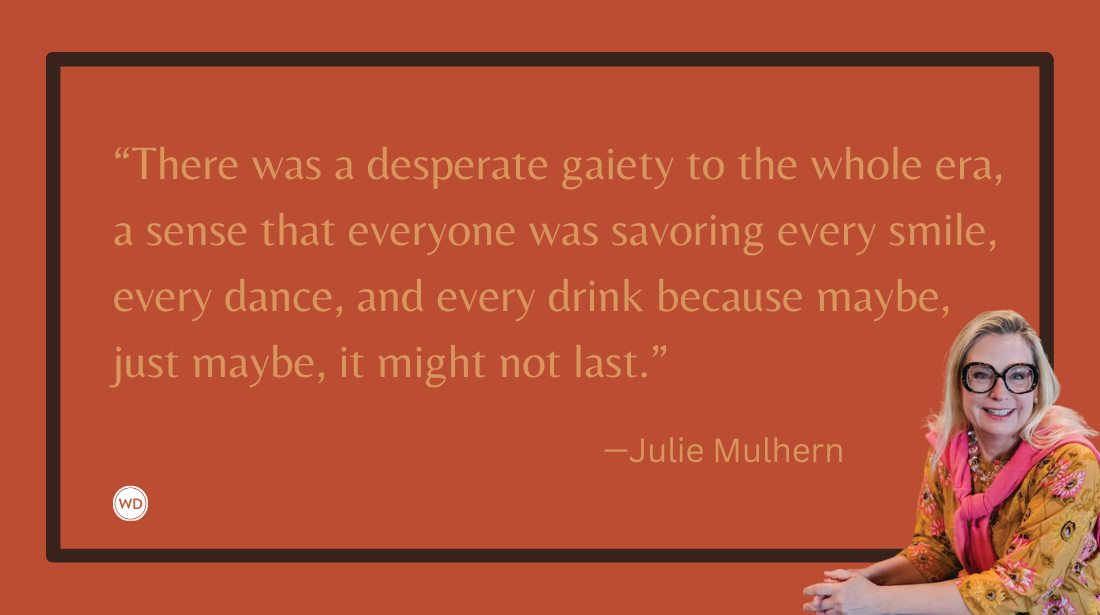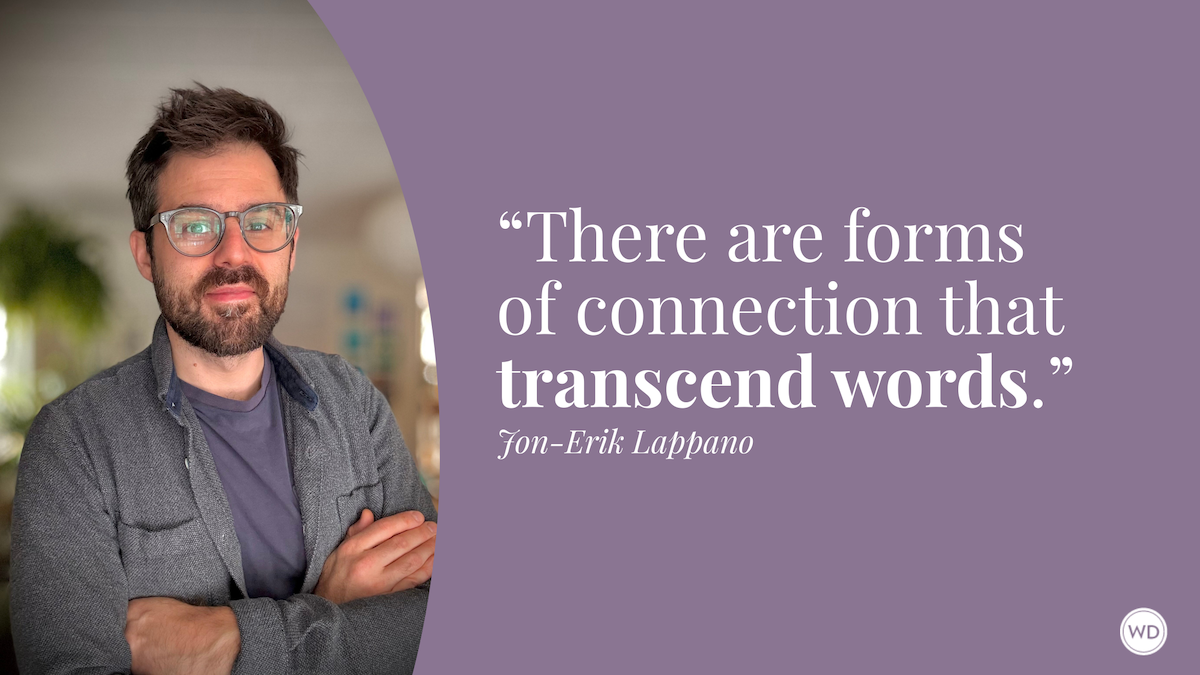How To Make Your Setting a Character
Powerfully portrayed settings seem to have a life of their own, but how is that effect achieved? Here are five keys to teach you how to make your setting a character in your story or novel that goes beyond invoking the five senses in description.
In great fiction, the setting lives from the very first pages. Such places not only feel extremely real, they are dynamic. They change. They affect the characters in the story. They become metaphors, possibly even actors in the drama.
Powerfully portrayed settings seem to have a life of their own, but how is that effect achieved? Make your setting a character is a common piece of advice given to fiction writers, yet beyond invoking all five senses when describing the scenery, there’s not a lot of info out there about exactly how to do it.
The trick is not to find a fresh setting or a unique way to portray a familiar place; rather, it is to discover in your setting what is unique for your characters, if not for you.
You must go beyond description, beyond dialect, beyond local foods to bring setting into the story in a way that integrates it into the very fabric of your characters’ experience.
*****
Writers often look upon outlines with fear and trembling. But when properly understood and correctly used, the outline is one of the most powerful weapons in a writer's arsenal.
*****
LINK DETAILS AND EMOTIONS.
As a child, did you have a special summer place? A beach house, or a lake cabin? One that’s been in the family for years, rich in history, stocked with croquet mallets, special iced tea glasses, and a rusty rotary lawn mower?
For me the special summer place was my great uncle Robert’s farm on a hillside near Reading, Pa. “Uncle Locker,” as we called him, was, as far as I knew, born old. He loved his John Deere tractor but didn’t particularly like children, especially not after my younger brother dropped the tin dipping cup down the front yard well.
Uncle Locker raised sheep. He stocked the lower pond with trout. He had connected a Revolutionary War–era log cabin with a Victorian–era farmhouse, erecting a soaring brick-floored, high-windowed living room between them. In that living room was a candy dish that each day magically refilled itself with M&M’s. (I suspect now that it was my great aunt Margaret who was the magician.)
In the evenings Uncle Locker would read the newspaper on the glassed-in porch, classical symphonies crackling on his portable transistor radio as summer lightning flashed across the valley. That, today, is my mental image of perfect contentment. When I hear a radio crackle in a storm, I relax. I miss my Uncle Locker with a sharp pang.
Now, let me ask you this: Without looking back over what you just read, what do you remember best about what I wrote? Was it a detail, like the dipping cup, the M&M’s, or the lightning? Or was it the feeling of contentment that, for me, accompanies an approaching storm? Whatever your answer, I would argue that you remember what you remember not because of the details themselves or the emotions they invoke in me, but because both those details and personal feelings are present.
In other words, it is the combination of setting details and the emotions attached to them that, together, make a place a living thing. Setting comes alive partly in its details and partly in the way that the story’s characters experience it. Either element alone is fine, but both working together deliver a sense of place without parallel.
MEASURE CHANGE OVER TIME.
There are other ways to bring setting alive. One of them is to measure the change in a place over time. Of course, most places don’t change much—only the people observing them do.
Kristin Hannah’s On Mystic Lake is a heading-home-to-heal novel. The lake in question is on Washington State’s Olympic Peninsula. However, the wounded heroine of the story, Annie Colwater, is a native of the suburbs of Los Angeles.
In the first part of the novel, Annie, immediately after her 17-year-old daughter’s departure for a semester in Europe, is devastated to learn that her husband wants a divorce. Don’t be shocked, but he has taken up with a younger woman at the office. It’s a humdrum setup, yet Hannah deftly uses the very ordinariness of Annie’s world as a starting point for building tension. In this passage near the novel’s beginning, she details springtime in L.A.:
It was March, the doldrums of the year, still and quiet and gray, but the wind had already begun to warm, bringing with it the promise of spring. Trees that only last week had been naked and brittle seemed to have grown six inches over the span of a single moonless night, and sometimes, if the sunlight hit a limb just so, you could see the red bud of new life stirring at the tips of the crackly brown bark. Any day, the hills behind Malibu would blossom, and for a few short weeks this would be the prettiest place on Earth.
Like the plants and animals, the children of Southern California sensed the coming of the sun. They had begun to dream of ice cream and Popsicles and last year’s cutoffs. Even determined city dwellers, who lived in glass and concrete high-rises in places with pretentious names like Century City, found themselves veering into the nursery aisles of their local supermarkets. Small, potted geraniums began appearing in the metal shopping carts, alongside the sundried tomatoes and the bottles of Evian water.
For nineteen years, Annie Colwater had awaited spring with the breathless anticipation of a young girl at her first dance. She ordered bulbs from distant lands and shopped for hand-painted ceramic pots to hold her favorite annuals.
But now, all she felt was dread, and a vague, formless panic. … What did a mother do when her only child left home?
L.A. always feels pretty much the same to me; but then again, I grew up in New England. Shows you how much I know. Who knew that the change of seasons could be measured by visions of Popsicles and cutoffs? By showing me the minute seasonal changes that a SoCal native would notice, Hannah nails spring as seen by Annie Colwater. But that’s not all. This spring, Annie’s usual “breathless anticipation” is replaced by dread. The contrast is jarring—in a good way.
REALIZE THAT HISTORY IS PERSONAL.
Historical novelists think a lot about what makes the period of their novels different from present day. They research it endlessly. Indeed, many historical novelists say that is their favorite part of the process. When the research is done and writing begins, though, how do they create a sense of the times on the page? “With details” is the common answer, but which details, exactly, and how many of them?
And what if the period of your novel is not terribly far back in history? If your story is set in the 1970s, is it enough to mention Watergate, or do you need to be even more specific about disco, VWs, horizontally striped polo shirts, and oil shocks? How about contemporary stories? Does one need to convey a sense of the times when the times are our own?
To start to answer those questions, read the Op-ed pages in the newspaper. Does everyone see our times in the same way? No. Outlooks vary. That should also be true for your fictional characters. What is your hero’s take on our times? As in so many aspects of novel construction, creating a sense of the times first requires filtering the world through your characters.
Joseph Kanon’s richly layered debut mystery novel, Los Alamos, won the 1998 Mystery Writers of America Edgar Award for Best First Novel. He followed with The Prodigal Spy, The Good German and the tragic and complicated Alibi.
Alibi is set in Venice in 1946, immediately after the close of World War II. Rich Americans are returning to Europe, among them widow Grace Miller, who migrates south to Venice, having found Paris too depressing. Grace invites her son Adam, the novel’s hero and narrator, who has been newly released from his post-war service as a Nazi hunter in Germany. As the novel opens, Adam tells of his mother’s return to the expatriate life:
After the war, my mother took a house in Venice. She’d gone first to Paris, hoping to pick up the threads of her old life, but Paris had become grim, grumbling about shortages, even her friends worn and evasive. The city was still at war, this time with itself, and everything she’d come back for—the big flat on the Rue du Bac, the cafés, the market on the Raspail, memories all burnished after five years to a rich glow—now seemed pinched and sour, dingy under a permanent cover of gray cloud.
After two weeks she fled south. Venice at least would look the same, and it reminded her of my father, the early years when they idled away afternoons on the Lido and danced at night. In the photographs they were always tanned, sitting on beach chairs in front of striped changing huts, clowning with friends, everyone in caftans or bulky one-piece woolen bathing suits. Cole Porter had been there, writing patter songs, and since my mother knew Linda, there were a lot of evenings drinking around the piano, that summer when they’d just married. When her train from Paris finally crossed over the lagoon, the sun was so bright on the water that for a few dazzling minutes it actually seemed to be that first summer. Bertie, another figure in the Lido pictures, met her at the station in a motorboat, and as they swung down the Grand Canal, the sun so bright, the palazzos as glorious as ever, the whole improbable city just the same after all these years, she thought she might be happy again.
There are several things to note in this highly atmospheric opening. First, Kanon weaves an undercurrent of tension through these two paragraphs, a tension that derives from his mother’s longing for … well, what? Paris is dissatisfying. Venice, seemingly untouched by the war, is full of sunlight and memories. A mood of nostalgia would be enough here, but Kanon himself is not satisfied with a mere rosy glow. Venice is “improbable” and Grace’s lift of spirit is tinged with doubt: “She thought she might be happy again.”
That word might is a calculated choice. Do you get the feeling that Adam’s mother will not recreate in Venice the happiness of the pre-war party of the 1920s and 1930s? You are correct. Grace is courted by a distinguished Italian doctor, Gianni Maglione, whom Adam immediately dislikes—with good reason, as it turns out. When Adam begins a love affair with Claudia Grassini, a Jewish woman who survived the camps by becoming a fascist’s mistress, he is drawn into a tragic conflict. Claudia accuses Dr. Maglione of wartime collaboration and, worse, condemning her own father to death at Auschwitz. Adam’s mother wishes to leave the past buried, but Adam, given his background and love for Claudia, cannot leave it alone.
Kanon’s opening also effectively evokes Europe in the immediate aftermath of the war. Paris is “grim” and “grumbling.” Grace’s Paris is specific, too: Kanon mentions not just the city’s streets, cafés and markets, but Grace’s flat on the “Rue du Bac” and the market on the “Raspail.” For all I know, Kanon could be completely making up those places. It doesn’t matter. It is their specificity that brings this Paris of food shortages and long memories alive.
Venice, by contrast, is full of false sunlight and sweet memories. These memories themselves are highly specific: afternoons on the Lido, striped changing huts, Cole Porter. Kanon plucks from his research a few choice tidbits that hint at a life of gay carelessness and privilege. His narrator’s casual familiarity with them contributes to the passage’s reality. But it’s not only that. The details and the mood, Grace’s naive longing and Adam’s cynical foreknowledge all roll together into a couple paragraphs that create a unique moment in time.
SEE THROUGH CHARACTERS’ EYES.
Let’s dig deeper into the relationship between character and time/place. Is there a technique more powerful than infusing a character with a strong opinion about his place or time? Yes. Infusing two characters with that.
Novelist Thomas Kelly focuses on working-class heroes and gritty New York settings. In Empire Rising, Kelly builds his panoramic, multiple-point-of-view novel around the construction of the Empire State Building in the 1930s. One principle point of view is
that of Irish-American steelworker Michael Briody. In the novel’s opening scene, Briody is chosen to pound in the first rivet at the building’s groundbreaking ceremony, a piece of political theater for which the waiting workers have little patience. On the site once stood a hotel, the demolition of which gives Briody pause during the self-congratulatory speeches:
Briody is not surprised that none of the swells on stage mention the six men who died demolishing the old hotel. Not surprised in the least. He considers their ugly endings, the crushed and broken bodies spirited away like just more rubble, their names already forgotten. Their stories untold. He shifts his weight from foot to foot, is anxious to start work. His fellow workers watch with dull stares. They have no interest in the staged spectacle. They mutter and joke under their breath until one of the concrete crew makes a loud noise, like a ripe fart, and the superintendent swivels his fat head around and glares at them as if they were recalcitrant schoolboys. They fall silent. They want the work. The next stop is the breadline.
The tension in this paragraph is, to my eye, nicely restrained: impatience mixed with a downtrodden cynicism unique to Depression workers who are one step away from starvation. What is Briody’s opinion of the ceremony? Kelly hardly needs to tell us; he simply lets Briody’s passing regard for the dead workers who preceded him imply how he feels.
A short while later in the story, Kelly introduces another principle point-of-view character, Johnny Farrell, a lawyer and bribe collector for Mayor Jimmy Walker. Johnny is king of his world, but all is not right with it. Johnny’s wife is from a rich and very proper family. She disdains his work and the people with whom he must associate. One Sunday morning they argue as his wife bundles their children off to her Episcopal church. After she departs, Johnny reflects on the differences in their upbringings:
Farrell kissed the children goodbye and watched as Pamela shepherded them into the waiting car, insisting that they ride the four blocks to the Church of the Resurrection rather than walk because she liked to make an impression. He thought for a moment of his own childhood in the Bronx, how his mother used to drag them through the crowded neighborhood streets to St. Jerome’s, all those immigrants seeing the church as a way to keep their past alive, and for a moment standing in his Fifth Avenue apartment so far from the warrens of his youth he could smell the incense and hear the Latin intonations and feel his mother’s rough hand holding his. The woman had lived in fear. And that fear had instilled in him a hunger, an ambition, and a need to never settle for anything, and now this is where that need had brought him—an elegant and spacious home among the city’s elite where his own children were total strangers to him. He grabbed his coat and hat and headed out into the day.
What would you say this passage is about? Scene setting? No. It’s about the different values of Pamela and Johnny Farrell, as well as Johnny’s rueful realization that the fulfillment of his ambitions has a bitter side. Yet notice the period details that the author weaves in: the Church of the Resurrection, the Bronx, immigrants, long-gone Fifth Avenue mansions. I would say that Farrell’s feelings about his family and childhood are intimately connected to New York City.
What does the setting of your current novel mean to the characters in it? How do you portray that meaning and make it active in the story? The techniques of doing so are some of the most powerful tools in the novelist’s kit. Use them and you will not only give your novel a setting that lives, but also construct for your readers an entire world, the world of the story.
*****
Get your copy of The Breakout Novelist, by Donald Maass!
(Writer's Digest uses affiliate links.)
Donald Maass heads the Donald Maass Literary Agency and is the author of several books, including Writing the Breakout Novel, Writing 21st Century Fiction, and The Emotional Craft of Fiction. Learn more at maassagency.com.









